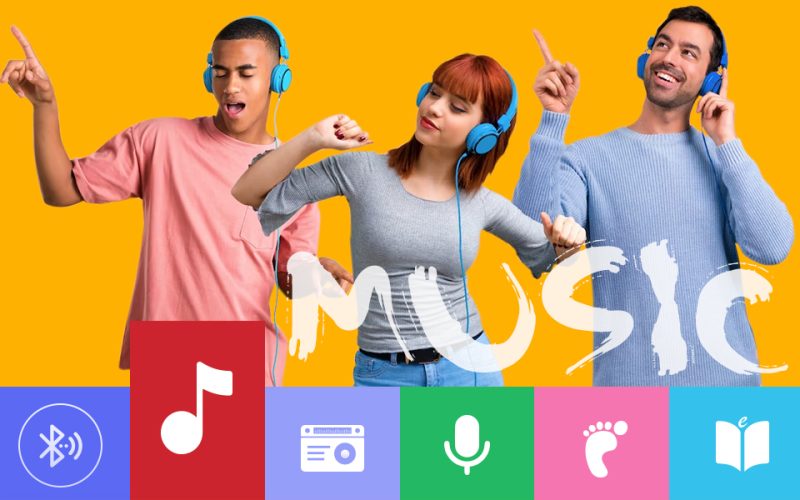Introduction
Over the last decade, the music and podcast industries have undergone significant transformations, largely driven by the rise of music streaming services and podcasts. These two mediums have changed the way we consume audio content, providing easy access, a variety of choices, and unique features that appeal to different audiences. With the rapid adoption of streaming platforms and the growth of podcasting, both have reshaped the entertainment and media landscape. This article explores the rise of music streaming and podcasts, analyzing their growth, impact, and the shifts in consumer behavior.
The Evolution of Music Streaming
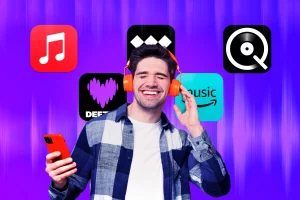
Music streaming began as a revolutionary shift in how people consumed music. Prior to streaming, music was primarily purchased through physical formats like CDs or digital downloads. However, the advent of platforms such as Spotify, Apple Music, Pandora, and Tidal has led to a dramatic shift in consumer habits. Today, streaming allows users to listen to an almost limitless catalog of music without owning physical copies or downloading files.
The convenience of music streaming is a major factor in its success. Consumers can access music on various devices, including smartphones, computers, and smart speakers, making it easier to listen to music on the go or at home. The pay-per-play model has also made music more affordable. Rather than purchasing individual songs or albums, users can pay a subscription fee to access an entire library of music.
The Growth of Podcasts
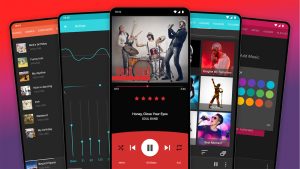
Podcasts, while not as old as music streaming, have also experienced tremendous growth. What started as niche audio content available through websites has turned into a global phenomenon. Podcasts cover a vast range of topics, from true crime to business advice, comedy, health, storytelling, and beyond. Platforms like Apple Podcasts, Spotify, and Google Podcasts have made it easier for creators to distribute their work and for listeners to find and enjoy shows.
One key factor driving the rise of podcasts is their accessibility and variety. Unlike traditional radio, podcasts offer on-demand content, giving listeners the freedom to consume content when they want. The ease of production and low barrier to entry have also led to a surge of new podcasts, with hundreds of thousands of shows available for download.
How Music Streaming Benefits Artists and Listeners

Music streaming has provided new opportunities for both artists and listeners. For artists, streaming platforms offer a global audience without the need for traditional distribution methods, like CDs or vinyl records. Independent musicians can now share their music worldwide with just a few clicks. For listeners, the advantage is clear: access to millions of songs at their fingertips. Platforms like Spotify and Apple Music allow users to discover new artists and genres, making it easier to explore diverse musical tastes without the hassle of buying albums or tracks individually.
How Music Streaming Has Changed Listening Habits

Before music streaming, people mostly listened to CDs, radio, or bought digital downloads. But with services like Spotify and Apple Music, listening to music has become easier than ever. You no longer need to carry physical albums or buy each song you like. Instead, you can instantly access millions of tracks with just a few taps on your phone. This shift has made music more convenient and has changed how often people listen to their favorite artists. People now listen to music on-demand, creating personalized playlists, and enjoying seamless access to new releases.
The Podcasting Boom: From Hobbyists to Professionals
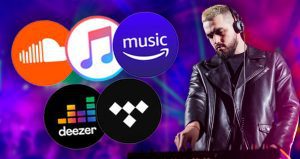
What started as a hobby for many audio creators has turned into a professional industry. As podcasts grew in popularity, many creators began to treat podcasting as a career. Some shows have gained such large audiences that they attract sponsorships and high-profile guests. In fact, big brands now invest in advertising within podcasts, seeing them as an excellent way to reach targeted audiences. This has led to better production quality and increased interest in podcasting as a serious medium. Today, podcasting is no longer just a hobby but a viable career path for many creators.
How Social Media Supports Music Streaming and Podcasts
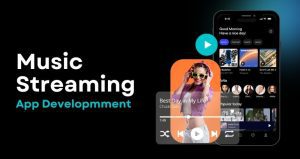
Social media has played a big role in the rise of both music streaming and podcasts. Musicians use platforms like Instagram, Twitter, and TikTok to promote their music and connect with fans. A viral video or social media post can send an artist’s song to millions of new listeners. Similarly, podcasters use social media to promote their episodes and interact with their audience. Social media helps both artists and podcast creators build a loyal following, making it easier to spread their content to a wider audience. This connection with listeners has become essential in growing and maintaining a fan base.
Key Differences Between Music Streaming and Podcasts
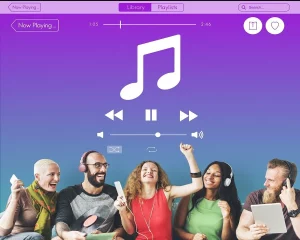
While music streaming and podcasts are both audio-based platforms, there are several key differences between them. Music streaming is generally used for listening to music, whereas podcasts are typically used for longer-form content that is often more informative or storytelling-driven.
Music streaming platforms usually offer personalized playlists, music recommendations, and curated radio stations based on your preferences, while podcast platforms tend to provide a mix of episodes from different genres, often with a focus on specific topics or discussions.
Additionally, music streaming is often passive—users can listen to their favorite songs while doing other activities. Podcasts, however, usually require more focus and attention since they involve interviews, discussions, and storytelling.
Impact of Music Streaming and Podcasts on the Industry
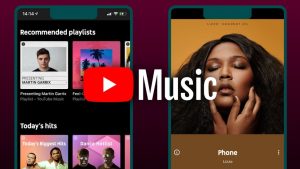
The rise of music streaming and podcasts has significantly impacted both the music and media industries. For music, streaming has become the dominant method of consumption. Revenue from streaming has surpassed traditional music sales, leading to a complete shift in the financial model of the music industry. Artists are now compensated based on the number of streams their songs generate, which has both benefits and drawbacks. While it allows emerging artists to reach a global audience, some argue that it does not offer enough compensation for the creators.
Podcasts have also influenced media consumption habits. Traditional radio and TV have faced challenges as more people turn to podcasts for entertainment, information, and education. Advertisers have recognized the potential of podcasts, and many are now investing in podcast ads, seeing podcasts as a highly targeted way to reach niche audiences.
Challenges Facing Music Streaming and Podcasts
Despite their popularity, music streaming and podcasts face some challenges. For streaming platforms, the issue of fair compensation for artists is a major concern. Many artists argue that streaming services do not pay enough per stream, making it difficult for them to earn a living. In the podcasting world, creators often struggle with competition and finding sustainable revenue streams. While some podcasts attract sponsorships, many creators still rely on smaller audiences. Both industries are also impacted by piracy and illegal sharing, which can hurt creators and platforms financially.
The Future of Music Streaming and Podcasts

Both music streaming and podcasts show no signs of slowing down. As technology continues to improve, both mediums are likely to see even more growth. Music streaming services are already experimenting with new features like high-definition audio, live-streamed concerts, and exclusive releases. Podcasts, too, are evolving, with new formats such as video podcasts and interactive content gaining popularity.
The increasing use of artificial intelligence and machine learning in both music streaming and podcast recommendations is expected to further enhance user experience. Personalized content is becoming more precise, which could lead to even greater engagement.
Comparative Table: Music Streaming vs. Podcasts
| Feature | Music Streaming | Podcasts |
|---|---|---|
| Content Type | Music tracks, albums, playlists | Audio shows, discussions, interviews |
| Consumption Style | Passive (listening to songs) | Active (focused listening) |
| Accessibility | Available on multiple devices (smartphones, smart speakers, computers) | Available on platforms (Apple Podcasts, Spotify, Google Podcasts) |
| Payment Model | Subscription-based or ad-supported | Mostly free, ad-supported |
| Length of Content | Short-form (3-5 minutes per song) | Long-form (15 minutes to several hours) |
| Personalization | Curated playlists, algorithmic suggestions | Recommendations based on past listening |
| Revenue Model | Revenue from subscriptions and ads | Revenue from ads and sponsorships |
Analysis of the Growth of Music Streaming and Podcasts
| Factor | Music Streaming | Podcasts |
|---|---|---|
| Adoption Rate | Rapid, with millions of users globally | Steady, growing audience each year |
| Market Growth | Overwhelmingly dominant, with major players like Spotify and Apple Music | Growing rapidly, with new podcasts launched daily |
| Audience Demographics | Younger, tech-savvy, music enthusiasts | Diverse, with podcasts appealing to all age groups |
| Technological Influence | Enhanced by AI and machine learning for personalized content | AI-driven recommendations and voice assistants enhancing accessibility |
| Content Diversity | Broad catalog of music genres | Extremely diverse, from true crime to education |
| Challenges | Low payout rates for artists | Monetization and competition for attention |
| Future Outlook | Continual expansion and technological improvements | Expected growth, with more innovative formats like video podcasts |
Conclusion
The rise of music streaming and podcasts has fundamentally altered the way we experience and interact with audio content. Music streaming has made listening to music more accessible and affordable, while podcasts have opened up a new world of entertainment, education, and information. Both have changed the media landscape, with implications for consumers, creators, and advertisers alike. As technology continues to evolve, the future of both music streaming and podcasts looks bright, offering even more personalized and engaging experiences for listeners.






